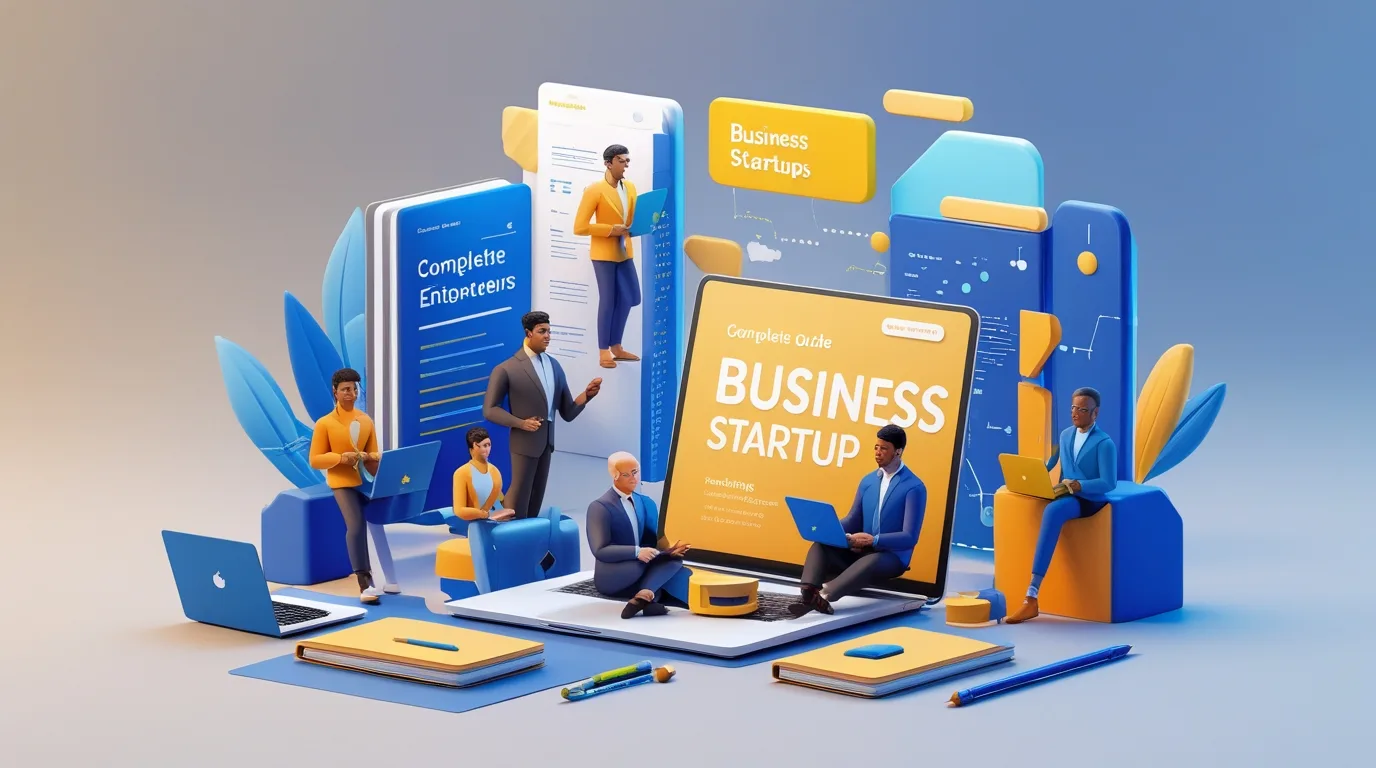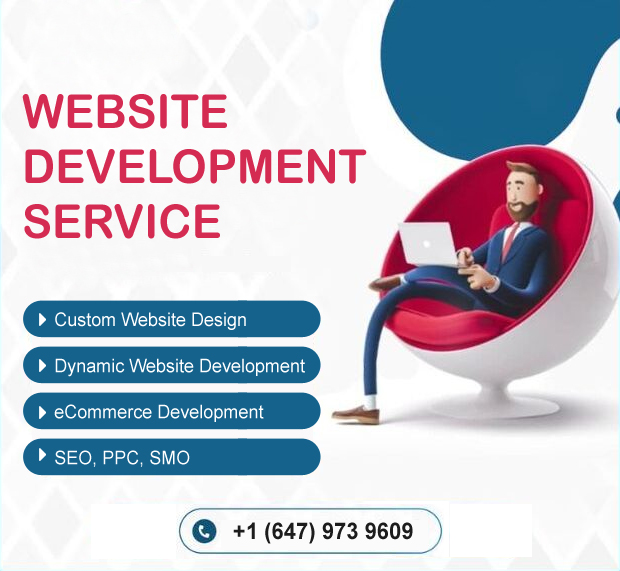The modern internet is no longer just a place for static websites and simple brochure pages. Businesses, governments, educational institutions, and even small community groups now rely on web portal—centralized, interactive platforms that bring together information, services, and users in one convenient hub.
This comprehensive guide explores the end-to-end process of web portal development, including planning, design, technology choices, security considerations, and the latest trends shaping 2025. Whether you are a business owner planning a customer portal, an entrepreneur launching a marketplace, or a developer looking to refine your skills, this in-depth resource will help you understand how to create a successful web portal.
- What Is a Web Portal?
A web portal is a secure, personalized website that aggregates data and services from various sources and presents them to users through a single interface. Unlike standard websites, portals are interactive gateways, allowing users to log in, customize content, and access multiple tools or services without switching platforms.
Common Types of Web Portals
- Customer Portals: Banks, utilities, and telecom providers use these for account management, bill payments, and service requests.
- Employee or Intranet Portals: Internal company hubs for HR policies, collaboration, and knowledge management.
- e-Commerce Marketplaces: Platforms like Amazon or niche B2B marketplaces where vendors and buyers interact.
- Community & Social Portals: Forums, support communities, or hobby networks.
- Educational Portals: Online learning platforms, virtual classrooms, and student dashboards.
- Government Portals: One-stop digital gateways for public services and documentation.
- Why Web Portals Matter in 2025
The global digital economy thrives on real-time data and personalized experiences. Web portals are the backbone of this transformation for several reasons:
- Centralized Access: Users reach all services—documents, messaging, analytics—through a single login.
- Enhanced Engagement: Interactive dashboards, personalized feeds, and smart notifications improve user satisfaction.
- Cost Efficiency: Automating processes like self-service support or HR tasks reduces administrative overhead.
- Scalability: Modern frameworks and cloud hosting allow portals to handle millions of concurrent users.
- Brand Authority: A professional portal signals credibility and innovation.
According to recent industry reports, the web portal market is projected to grow steadily through 2030 as companies demand integrated digital solutions.
- Planning Your Web Portal
Every successful project begins with clear planning. Skipping this stage is the fastest path to cost overruns and missed deadlines.
- Define Your Goals
Identify the core purpose. Are you streamlining internal communication? Building a global marketplace? Providing client self-service? Document the objectives and success metrics. - Understand the Audience
User research is crucial. Conduct surveys, interviews, and competitor analysis to learn about user expectations, preferred devices, and key pain points. - Feature Mapping
List must-have features such as login systems, dashboards, content management, payment gateways, or third-party integrations. Separate “must-haves” from “nice-to-haves.” - Budget & Timeline
Estimate development costs, hosting fees, and long-term maintenance. Allow flexibility for unexpected adjustments. - Choosing the Right Technology Stack
The technology stack shapes your portal’s performance, scalability, and security. Key layers include:
- Front-End Frameworks: React, Angular, or Vue for fast, responsive interfaces.
- Back-End Technologies: Node.js, Django (Python), Ruby on Rails, or .NET for robust server-side logic.
- Database: MySQL, PostgreSQL, MongoDB, or cloud-native solutions like AWS Aurora.
- Hosting & Infrastructure: Cloud platforms (AWS, Azure, Google Cloud) provide auto-scaling and global content delivery.
- APIs & Integrations: RESTful or GraphQL APIs enable seamless communication with third-party services.
Your choice depends on project complexity, team expertise, and long-term scalability needs.
- Designing an Intuitive User Experience
A web portal’s success depends heavily on user experience (UX) and user interface (UI) design.
- Consistency: Maintain a unified design language across all pages and features.
- Mobile-First: With over 60% of traffic coming from mobile devices, responsive design is non-negotiable.
- Accessibility: Follow WCAG guidelines to ensure usability for people with disabilities.
- Personalization: Dynamic dashboards, smart recommendations, and user-specific notifications keep users engaged.
- Performance Optimization: Lazy loading, image compression, and content delivery networks (CDNs) help achieve fast load times.
- Core Features of a Modern Web Portal
While each portal is unique, the following features are widely adopted in 2025:
- Single Sign-On (SSO): Simplifies authentication across multiple services.
- Advanced Search: AI-driven search results, auto-complete, and filters.
- Content Management System (CMS): Enables admins to update information without coding.
- Collaboration Tools: Chat, discussion boards, or shared workspaces.
- Data Analytics Dashboard: Real-time analytics for administrators and, when appropriate, for end users.
- Multilingual Support: Expands your reach to global audiences.
- Security Layers: SSL encryption, role-based access, and regular vulnerability scans.
- Development Process Step by Step
- Discovery & Documentation
Translate goals into a detailed project specification, including wireframes and technical requirements. - Prototyping
Create clickable mockups to visualize user flows and refine the design before coding. - Agile Development
Use iterative sprints to build core modules, integrate APIs, and implement security features. - Testing & Quality Assurance
Perform unit testing, integration testing, and user acceptance testing. Don’t forget load testing to simulate heavy traffic. - Deployment
Set up a production environment with CI/CD pipelines for smooth releases. - Maintenance & Updates
Ongoing monitoring, bug fixes, and feature upgrades are essential for long-term success. - Security Best Practices
Security remains a top priority in 2025 as cyber threats grow more sophisticated.
- End-to-End Encryption: Protect data during transmission and storage.
- Multi-Factor Authentication: Reduce risks of unauthorized access.
- Regular Penetration Testing: Identify and fix vulnerabilities proactively.
- Compliance: Adhere to regulations such as GDPR, HIPAA, or region-specific privacy laws.
- Backup & Disaster Recovery: Automated backups and failover systems protect against data loss.
- Costs of Web Portal Development
Costs vary widely depending on scope, technology stack, and team location. A basic portal might start around USD 20,000, while enterprise-level solutions can exceed USD 200,000. Factors influencing cost include:
- Complexity of Features
- Number of Integrations
- Customization Level
- Security and Compliance Needs
- Maintenance Plans
Investing in quality development and ongoing support often saves money in the long run by avoiding downtime and security breaches.
- Trends Shaping Web Portals in 2025
Staying ahead of trends keeps your portal competitive:
- AI-Driven Personalization: Machine learning tailors content and recommendations in real time.
- Progressive Web Apps (PWAs): Deliver app-like experiences without downloads.
- Voice Search & Conversational UI: Voice-enabled navigation is increasingly popular.
- Micro-Frontends: Decoupled architecture for faster updates and scalability.
- Blockchain Integration: Enhances transparency and security for transactions.
- Measuring Success
After launch, track key performance indicators (KPIs):
- User Engagement: Daily active users, session length, and repeat visits.
- Performance Metrics: Page load times, server uptime, and error rates.
- Conversion Rates: Registrations, purchases, or other business goals.
- Customer Feedback: Surveys and reviews to guide improvements.
Continuous analysis helps refine features and maintain user satisfaction.
- Building the Right Team
A typical web portal development team includes:
- Project Manager: Oversees planning, timelines, and communication.
- UI/UX Designers: Create user-friendly interfaces.
- Front-End Developers: Implement responsive layouts and interactive elements.
- Back-End Developers: Handle databases, server logic, and integrations.
- QA Testers: Ensure reliability and bug-free performance.
- Security Experts: Monitor threats and implement protective measures.
For startups, outsourcing to a reputable development agency can be more cost-effective than hiring a full in-house team.
- Case Study Snapshot
Consider a mid-sized healthcare provider building a patient portal. Their goals were to allow online appointment booking, medical record access, and secure messaging with doctors.
By choosing a HIPAA-compliant cloud infrastructure, implementing two-factor authentication, and designing a mobile-first interface, they achieved a 40% reduction in administrative calls and a 25% increase in patient satisfaction scores within six months of launch.
- Tips for Long-Term Success
- Iterate Often: Regularly release updates based on user feedback.
- Educate Users: Provide tutorials and FAQs to reduce support queries.
- Monitor Analytics: Identify trends and optimize features accordingly.
- Stay Compliant: Update privacy policies and security measures as laws evolve.
- Promote Your Portal: SEO, social media, and email campaigns drive traffic and engagement.
Conclusion
Web portal development in 2025 is more than building a website—it’s about creating a dynamic digital ecosystem where users, data, and services converge seamlessly. By combining careful planning, the right technology stack, robust security, and user-centric design, businesses can create portals that enhance engagement, reduce operational costs, and future-proof their online presence.
Whether you are launching a customer support hub, an educational platform, or an enterprise intranet, the principles outlined in this guide provide a strong foundation. Invest the time and resources now, and your web portal can become a vital engine for growth and innovation for years to come


Leave a Reply